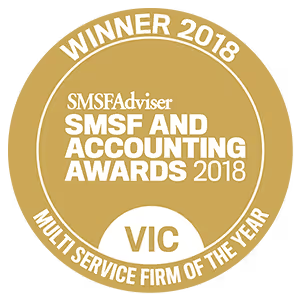When looking at selling a business, there are two ways you can do it: selling shares in the business, or selling the business’ assets.
In this article, we’ll look at what both these types of sales involve, the pros and cons of each, and considerations when undertaking your sale.
Liston Newton Advisory are here to help you manage the sale of a business. Contact us today to organise a FREE financial strategy session, and find out the most appropriate avenue for your business sale.
To better plan and manage your business's financial future, bring on a diligent Liston Newton virtual CFO.
Selling shares vs selling a business
There are two ways you can sell your business: selling shares in the business, or selling the business’ assets.
When selling shares in the business (that is, ordinary share capital in the company that owns the business), you’re selling the company and business in its entirety.
When selling the business’ assets, you’re selling the physical and notional property of the business. This includes things like property, stock, equipment, and even goodwill.
As a general rule of thumb, purchasers tend to prefer to buy business assets as opposed to shares in the business itself. This way, they take on less risk associated with the history of the entity.
However, this can depend on the size and complexity of the business transaction.
Let’s look at these in a bit more detail.
How does a business share sale work?
When acquiring a business through a share sale, the purchaser is inheriting the entire business. This includes all its historical transactions, liabilities, and tax history (which includes everything, from income tax, to GST, Fringe Benefits Tax, Payroll Tax, and more). Any future audits undertaken by the ATO will now be the purchaser’s responsibility—as are any penalties or fines.
So the onus is on the purchaser to do their due diligence in order to reduce any risks that might be acquired along with the business.
Pros and cons of a share sale
[table]
[thead]
[tr]
[th]Pros[/th]
[th]Cons[/th]
[/tr]
[/thead]
[tbody]
[tr]
[td]Shareholders may see better overall returns in a sale that includes access to tax concessions[/td]
[td]Given the increased liability to the buyer, the seller can be required to provide indemnities or warranties to the buyer[/td]
[/tr]
[tr]
[td]All employment contracts and third-party contracts, such as supplier agreements and rental agreements, remain within the company[/td]
[td]The buyer will need to do extensive due diligence to determine any level of risk[/td]
[/tr]
[tr]
[td]Stamp duty isn’t payable on a share sale[/td]
[td]Restrictions on share transfers to third parties may apply[/td]
[/tr]
[/tbody]
[/table]
How does a business asset sale work?
By comparison, an asset sale is often a much more straightforward process. There is no acquired liability involved—the purchaser doesn’t assume any historical transactions, liabilities, or tax history, so the risks are greatly reduced. This significantly reduces the scope of any due diligence required prior to buying the business’ assets.
Pros and cons of an asset sale
[table]
[thead]
[tr]
[th]Pros[/th]
[th]Cons[/th]
[/tr]
[/thead]
[tbody]
[tr]
[td]The straightforward process sales process makes it a more attractive option for the buyer[/td]
[td]Third-party consent may be required in some cases (eg. rental agreements, or supplier agreements)[/td]
[/tr]
[tr]
[td]The seller can choose which assets they transfer to the new owner[/td]
[td]Any business liabilities remain with the seller—the buyer only has to worry about liability involved with the assets they purchase[/td]
[/tr]
[tr]
[td]Potential to limit GST on sale[/td]
[td] [/td]
[/tr]
[/tbody]
[/table]
The difference between a share sale and a business sale in numbers
Below is an example of how each works, so you can see the after-tax net cash position based on either an asset sale or shale sale.
Example

John has decided to sell his business, and a buyer has agreed to purchase the business for $10 million.
First, we must calculate the cost base of the business’ shares and total asset value.
- To calculate the cost base of shares: determine the value of share capital in the business, plus any incidental costs incurred (such as transaction costs).
- To calculate the cost base of assets: You can do this by calculating the actual figure paid for each asset, minus any accumulated depreciation claimed on tax.
In this example, John sells his business for $10,000,000.
If looking at shares, his total cost base for shares is $1,000,000, which equals:
- $900,000 for the shares
- $100,000 in incidental costs.
If looking at assets, his total cost base for assets is $5,000,000, which equals:
- $2,000,000 in inventory
- $1,500,000 in cash
- $1,500,000 in fixed assets.
Making a share sale
[table]
[thead]
[tr]
[th]Net gain calculation[/th]
[th]Amount[/th]
[/tr]
[/thead]
[tbody]
[tr]
[td]Sale price[/td]
[td]$10,000,000[/td]
[/tr]
[tr]
[td]Cost base[/td]
[td]$1,000,000[/td]
[/tr]
[tr]
[td]Capital gain[/td]
[td]$9,000,000[/td]
[/tr]
[tr]
[td]General CGT discount of 50%[/td]
[td]($4,500,000)[/td]
[/tr]
[tr]
[td]Taxable gain[/td]
[td]$4,500,000[/td]
[/tr]
[tr]
[td]Tax on taxable gain at a personal rate of 45%[/td]
[td]($2,115,000)[/td]
[/tr]
[tr]
[td]Net cash after tax (John personally)[/td]
[td]$7,885,000[/td]
[/tr]
[/tbody]
[/table]
Making an asset sale
[table]
[thead]
[tr]
[th]Net gain calculation[/th]
[th]Amount[/th]
[/tr]
[/thead]
[tbody]
[tr]
[td]Sale price (minus the cash balance)[/td]
[td]$8,500,000[/td]
[/tr]
[tr]
[td]Asset value (excluding cash balance not transferring)[/td]
[td]$3,500,000[/td]
[/tr]
[tr]
[td]Gain on sale (goodwill)[/td]
[td]$5,000,000[/td]
[/tr]
[tr]
[td]Tax on gain, taxed at company rate of 26%[/td]
[td]$1,300,000[/td]
[/tr]
[tr]
[td]Total cash after tax[/td]
[td]$7,200,000[/td]
[/tr]
[tr]
[td]Cash in business[/td]
[td]$1,500,000[/td]
[/tr]
[tr]
[td]Total cash in business[/td]
[td]$8,700,000[/td]
[/tr]
[tr]
[td]Dividend paid to John[/td]
[td]$8,700,000[/td]
[/tr]
[tr]
[td]Franking credit (assuming there are sufficient franking credits to fully frank the dividend)[/td]
[td]$3,056,757[/td]
[/tr]
[tr]
[td]Total taxable dividend[/td]
[td]$11,756,757[/td]
[/tr]
[tr]
[td]Tax payable at personal rate of 45%[/td]
[td]$5,290,541[/td]
[/tr]
[tr]
[td]Less: franking credit[/td]
[td]$3,056,757[/td]
[/tr]
[tr]
[td]Net tax payable[/td]
[td]($2,233,784)[/td]
[/tr]
[tr]
[td]Net cash after tax (John personally)[/td]
[td]$6,466,216[/td]
[/tr]
[/tbody]
[/table]
In summary
Based on the above calculations, the table below details the net after-tax position following the sale of John’s business. As you can see, the share sale provides the seller with the most money after-tax. However, if you do decide to leave the cash in the business following an asset sale, this provides more cash with which to invest into future businesses.
Careful deliberation should be undertaken when choosing the type of sale, as there are various factors and tax planning considerations to take into account before selecting either option.
[table]
[thead]
[tr]
[th] [/th]
[th]Total tax payable[/th]
[th]Net cash after tax[/th]
[/tr]
[/thead]
[tbody]
[tr]
[td]Share Sale[/td]
[td]$2,115,000[/td]
[td]$7,885,000[/td]
[/tr]
[tr]
[td]Asset Sale[/td]
[td]$3,566,784[/td]
[td]$6,543,103[/td]
[/tr]
[tr]
[td]Net Cash Difference[/td]
[td]$1,418,784[/td]
[td]$1,418,784[/td]
[/tr]
[/tbody]
[/table]
The final word
When looking at selling your business, it’s critical to first determine what you want to achieve with the sale.
Liston Newton Advisory is here to help. We can work with you to undertake a pre-due diligence health check of your business, and support you in:
- Providing a review of any historical issues, and a summary of specific areas of risk to be aware of.
- Resolving any tax issues that were identified prior to the commencement of sales proceedings.
- Undertaking a due diligence check and business valuation.
- Calculating the capital gain or loss on both an asset sale and share sale, and outline any mitigating factors to the process.
Our goal is to make the sale of your business as tax-effective as possible.






